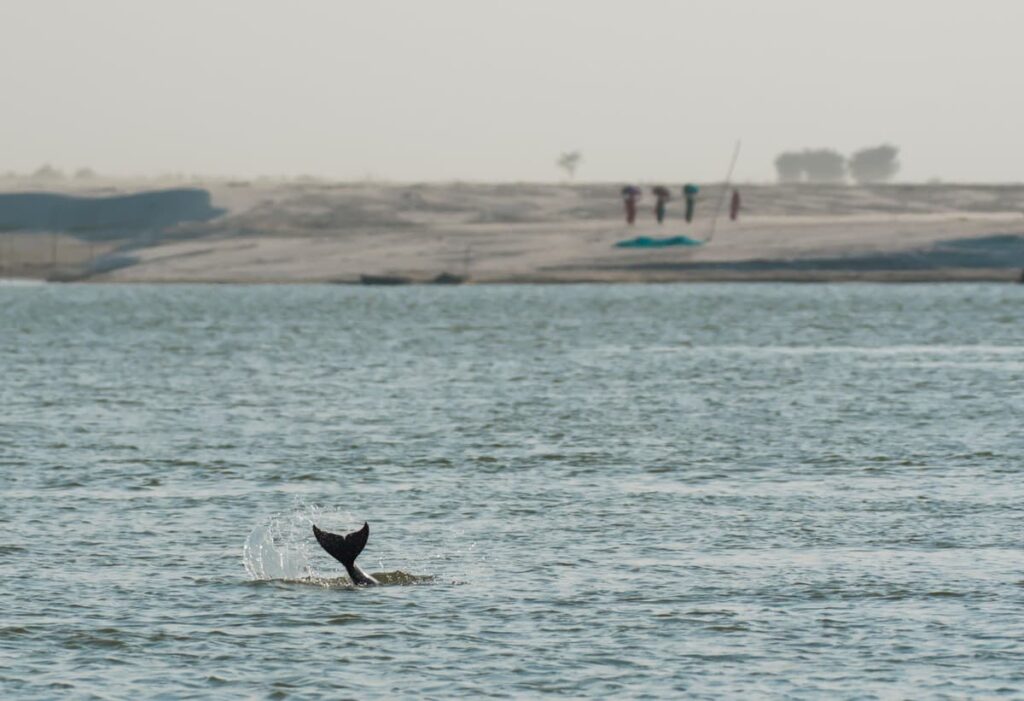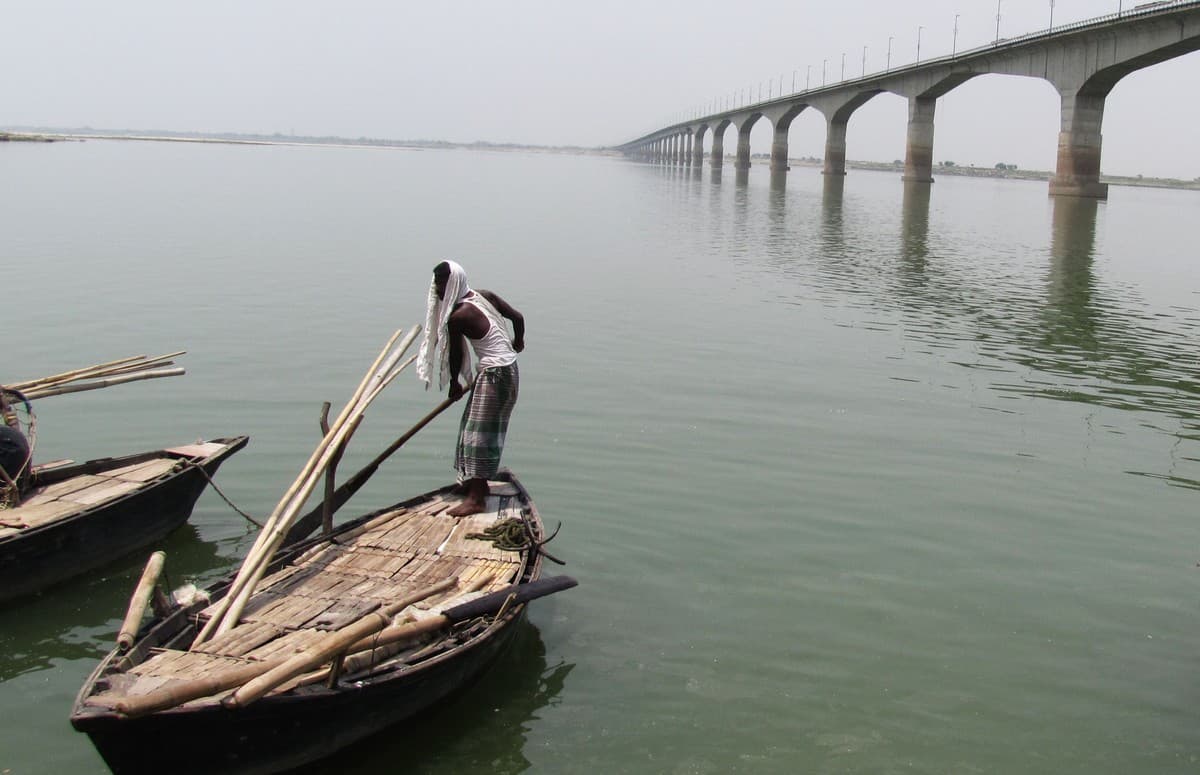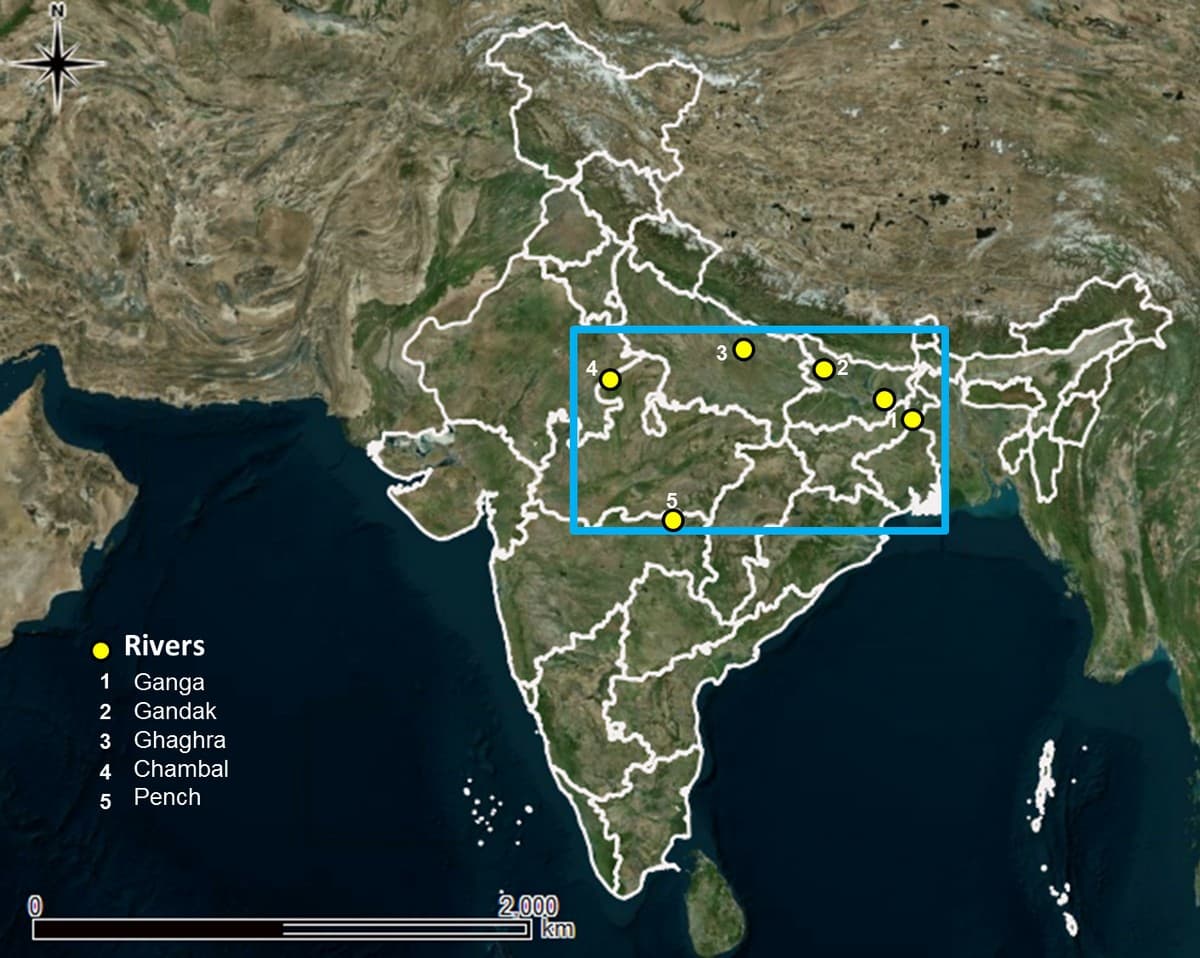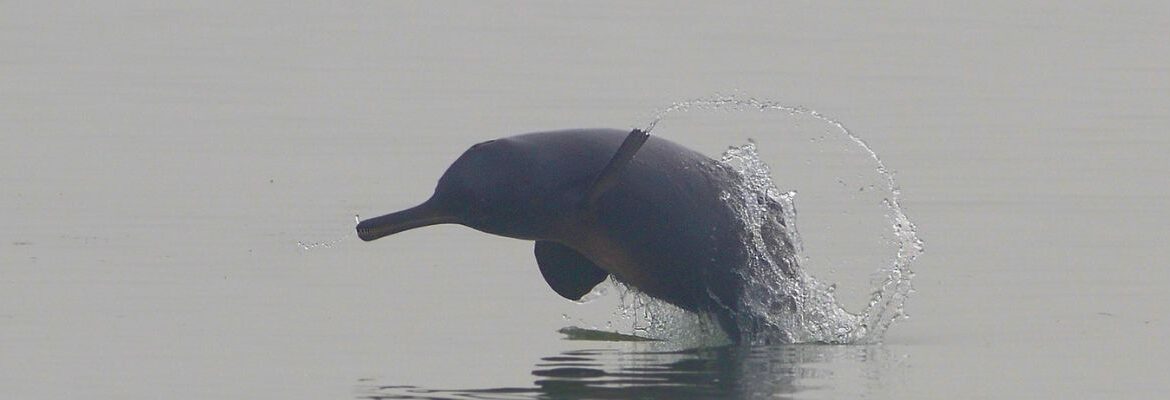In India’s waterscapes, freshwater species such as Ganges river dolphins, gharials, freshwater turtles, otters, and waterbirds face serious threats such as accidental entanglement in fishing nets, targeted hunting by fishers, and competitive interactions over fishery resources. At the same time, capture fisheries provide a vital source of livelihood and nutritional security to many socio-economically marginalised communities in the Gangetic plains. Fishers are also dependent on adequate and clean water in rivers regulated by dams and barrages, and in that way, they suffer from river flow alterations just as biodiversity does. This inter-dependency between freshwater wildlife and fisheries is, thus, a key area for policy advocacy and engagement.

A Ganges river dolphin surfaces in Vikramshila Gangetic Dolphin Sanctuary, Bihar. Photo credit: Mrinal Kaushik_CC BY-SA 4.0
WCT’s Riverine Ecosystems and Livelihoods (REAL) programme seeks to examine the ways in which the objectives of fisheries and wildlife management in India’s Gangetic plains and Central India can be interwoven, specifically in areas where fishing activity and endangered freshwater species overlap. This programme also studies the conflicts over fishing rights in and around terrestrial and riverine or wetland protected areas. To this end, WCT conducts surveys and studies on ecological interactions between freshwater species and fishing activity; reviews existing gaps in fisheries and wildlife laws; and identifies the institutional and socio-economic factors underlying fishery conflicts both with wildlife conservation and other river-dependent stakeholders. This project builds on the long-term research and conservation efforts by its team in the Ganga River and its tributaries in the Gangetic plains.

Photo credit: Kadambari Deshpande

REAL programme project sites in the Gangetic Plains and Central India. Credit: WCT
Header photo credit: Soumen Bakshi
Your donations support our on-ground operations, helping us meet our conservation goals.
Related Links
- River Animals and River People: For a Shared Future
- Connectivity Conservation and the Need for Science Based Policy
- Fish Out of Water – One Too Many
- WCT Newsroom
- Capacity Building Workshop for Veterinarians on Management of Freshwater Animals in Distress was held at Jaipur
- Roofed turtles, iguanas, ball pythons as pets is bringing Indians false sense of glamour

